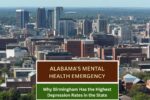The U.S. Department of Education has announced it will resume collections on defaulted federal student loans starting May 5, 2025, marking the end of a more than five-year pause triggered by the COVID-19 pandemic.
This move affects approximately 5.3 million borrowers who are currently in default, along with an additional 4 million who are delinquent on their loans, according to federal estimates.
A Return to Collections
The collections freeze began in March 2020, as part of a broader federal relief effort to ease financial pressure on Americans during the pandemic. Since then, borrowers in default have been shielded from wage garnishments, federal payment offsets, and other collection efforts.
That is about to change.
On May 5, the Department of Education will reinstate the Treasury Offset Program, which allows the federal government to collect on defaulted loans by withholding tax refunds, Social Security payments, and other federal disbursements from borrowers.
By late summer, the Department also plans to resume wage garnishments a process that lets the government deduct money directly from borrowers’ paychecks. A mandatory 30-day notice will be issued before any wage garnishment begins.
We’re taking measured steps to resume collections responsibly and give borrowers every opportunity to avoid financial hardship,” a spokesperson for the Department of Education said.
Rising Concerns Over Defaults
The restart of collections comes at a time when delinquencies on federal student loans are rising rapidly. As of March 2025, nearly 4 million borrowers were more than 90 days past due, raising alarms within the Department.
Internal projections suggest that nearly a quarter of the entire federal student loan portfolio could fall into default by the end of the year if trends continue.
For more details on federal student loan status and data, visit the Federal Student Aid website.
Borrower Notifications and Relief Options
To prepare borrowers for the restart of collections, the Office of Federal Student Aid (FSA) has begun notifying those in default. Emails outlining available repayment and rehabilitation options will be sent out over the next two weeks.
Borrowers can still take action to avoid having their wages or benefits seized. Key programs include:
- Income-Driven Repayment (IDR) Plans – These plans cap monthly payments based on a borrower’s income and family size.
- Loan Rehabilitation – Borrowers in default can return their loans to good standing by making nine on-time payments over 10 months.
Borrowers can also contact the Default Resolution Group at 1-800-621-3115 or visit myeddebt.ed.gov to explore options and get support.

Criticism and Warnings from Advocates
The decision to resume collections has drawn criticism from borrower advocacy groups and progressive lawmakers who argue the timing could harm vulnerable populations, including seniors and low-income families.
Restarting collections now, while millions are still recovering financially, could be catastrophic,” said a spokesperson from the Student Borrower Protection Center.
Senator Elizabeth Warren and other Democrats have urged the Biden administration to consider further reforms, particularly around how collections impact Social Security recipients and borrowers with disabilities.
As of this writing, there are no new protections in place to prevent offsets or garnishments for these groups, though the Department says it is evaluating additional relief efforts.
What Borrowers Should Do Now
With the May 5 restart date approaching, borrowers are urged to:
- Check their loan status at StudentAid.gov
- Contact their loan servicer or the Default Resolution Group
- Explore options for affordable repayment
- Ensure their contact information is up to date to receive government notices
“Default does not have to be permanent,” the Department said in a recent statement. “We are committed to helping borrowers recover.”
Final Thoughts
As the government lifts the long-standing freeze on student loan collections, millions of Americans face a new financial reality. While resources and relief programs are available, navigating the complex student loan system can still be daunting especially for those already in default. The coming months will be a critical test of how effectively the Department of Education can support borrowers while enforcing repayment. Ultimately, this moment underscores the urgent need for long-term reform in how the nation manages higher education financing and debt recovery.

Pankaj Kumar is a skilled content writer at OTE News, focusing on breaking news, technology, and socio-political developments. With a background in Mass Communication, he brings a balanced perspective to his articles, ensuring clarity and reliability. Pankaj has a knack for simplifying complex topics for readers.
In his free time, he enjoys photography, traveling, and experimenting with new cuisines. His curiosity and dedication to truthful reporting make him a valuable contributor to OTE News.




